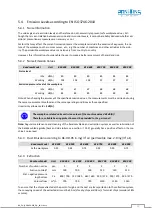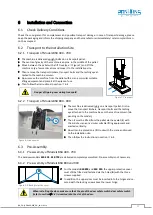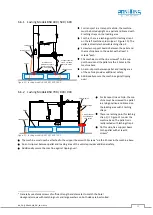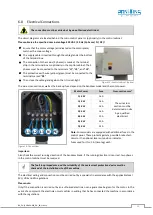
BA_PH_BSB-400-900_EN_44-21.docx
17
4.3
Danger Zones on the Bandsaw
4.3.1
Danger Zone Bandsaw Blade
Figure 2: Danger zone sawblade
•
The area 120 mm around the saw blade is a
danger zone.
•
Make sure that your hands are at least 10 cm
away from the saw blade.
•
If a minimum distance of 10 cm cannot be
maintained, use a push stick or other suitable
aid for feeding the workpiece.
•
When feeding the workpiece, place your hands
flat with your thumbs on them and do not
spread your fingers.
•
Lower the guard to a distance of max. 5 mm
from the workpiece.
Danger of cutting and being drawn in! Danger zone of 120 mm around the saw blade!
4.3.2
Danger Zone around the Machine
Another danger zone is located to the right of the machine. Here there is a particular risk of serious injury from
a torn bandsaw blade, which can be ejected in this area. During operation, it is strictly forbidden for the operator
as well as any helpers and possible observers to stay in this area!
Figure 3: Danger zone around the machine
•
The operator of the machine must generally
stand in the direction of cutting, in front of the
bandsaw and outside the danger zone.
•
A required helper for workpiece removal must
generally stand opposite the cutting direction
and outside the danger zone, behind the ma-
chine, on the opposite side to the operator.
•
Any observers must stand in a semicircle outside
the danger zone. An adequate distance must be
kept so that the operator of the machine and a
possible helper are not hindered in their work.
Be aware of the danger posed by an ejecting bandsaw blade in the event of a band break!
Entering the danger zone during operation can lead to very serious injuries.
Only use bandsaw blades that are in perfect condition resp. have been correctly welded, ground
and set. Damaged bandsaw blades must be replaced immediately.
Danger Zone
Danger Zone
Operator
Helper
Observers
















































